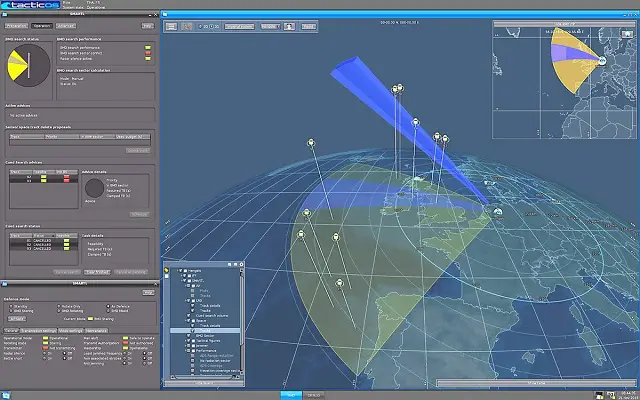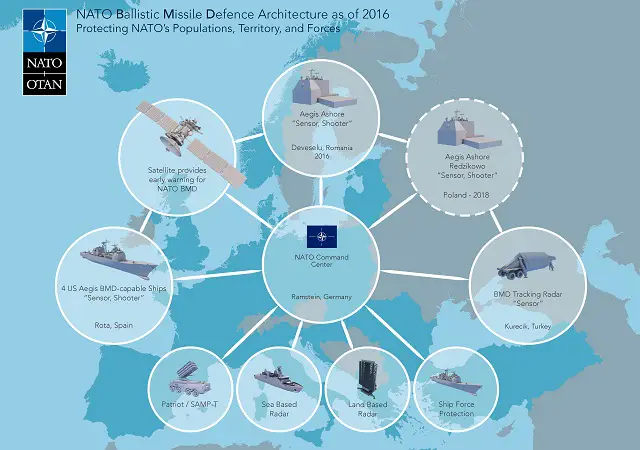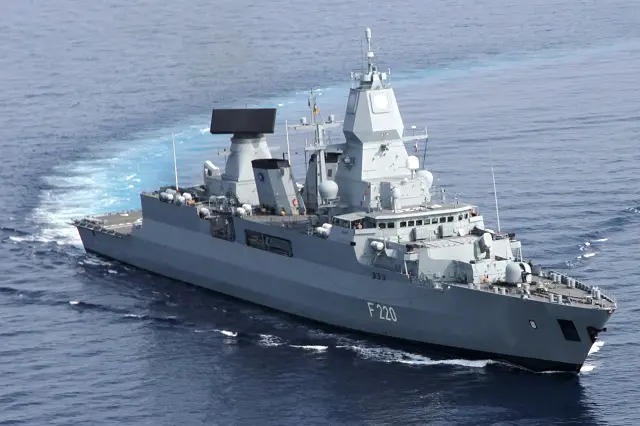|
|
|||
 Output from a SMART-L EWC radar. Note the sattelite tracks. Picture: Royal Netherlands Navy Chief's twitter account. Output from a SMART-L EWC radar. Note the sattelite tracks. Picture: Royal Netherlands Navy Chief's twitter account. |
|||
|
|
|||
|
Navy Recognition undestands that the Bundeswehr is looking for an "off the shelf, immediatly available" technology. The natural choice appears to be the SMART-L Early Warning Capability (EWC) by Thales Netherlands. Contacted by Navy Recognition, a representative refused to make any comment regarding the German Navy plans. Asked about the differences between existing SMART-L and the EWC variant, we were explained that it is "not just a software upgrade". The two variants may look similar from the outside but their hardware is actually quite different. For starters, the first one is a passive electronically scanned array (PESA) while the EWC variant is an active electronically scanned array (AESA) radar designed to detect air, surface, and high-speed exo-atmospheric targets. It uses Gallium Nitride technology known to improve radar reliability, range, and coverage.
|
|||
|
|
|||
 The architecture of NATO ballistic missile defense, as of 2016. In a few years, the frigates of the Sachsen-class will be part of the sea-based radar. Picture: German Navy The architecture of NATO ballistic missile defense, as of 2016. In a few years, the frigates of the Sachsen-class will be part of the sea-based radar. Picture: German Navy |
|||
|
|
|||
|
A new contribution to the European NATO BMD
The Ballistic Missile Defense role mainly relies on US destroyers today. From about 2025 it could also involve Belgian ships. The country joined a NATO missile defense project group at the end of October, to which Germany, Denmark and the Netherlands belonged so far. At the same time, it has committed itself to contribute to the group's ability to actively defend itself - in addition to the pure sensors on Dutch, Danish and soon German ships. The Belgian naval forces already cooperate very closely with the Royal Netherlands Navy and, together with their new frigates, are equipped with extensive interceptors, "exo-atmospheric interceptors". The focus of this project group, under German leadership since May 2015, has been the early warning for NATO air defense with the so-called target assignment for American interceptors. The performance spectrum of the European Alliance partners will significantly expand with the new German and the new Belgian contribution - and will substantially strengthen the defense of NATO as a whole. Ballistic Missile Defense "against mass destruction weapons Experts have warned of the global spread of long-range missiles. According to estimates, more than 30 countries around the world now have the technology to build missiles of 1,000 kilometers range or more - from the so-called mid-range to intercontinental rocket. Such missiles follow a ballistic trajectory, that is, they leave the Earth's atmosphere in a high arc for a part of the route to their destination before they strike. These missiles are particularly dangerous because they can potentially be equipped with weapons of mass destruction. If their "payload" is nuclear, biological or chemical weapons, they are not only threatening punctual military targets, such as the runway of an airfield, but the whole airfield and all the inhabitants in its neighborhood. Among other Alexander Vershbow, Deputy NATO Secretary General, described the military counter-measures of the Atlantic Alliance at an international conference in May as purely defensive: "Our ballistic missile defense is designed to defend our territory, our populations and our troops against a range of threats , which come from outside the European-Atlantic area. " |
|||
German Navy to Modernize its F124 Sachsen-class Frigates with New Radar to Join NATO BMD
- Posted On




